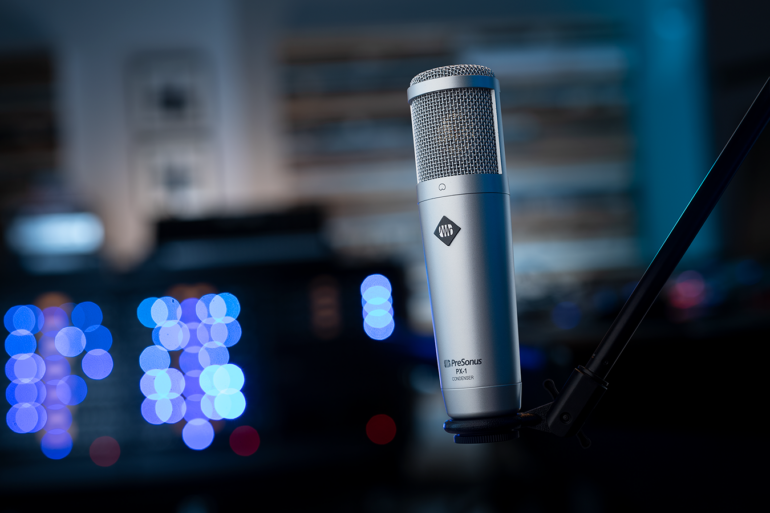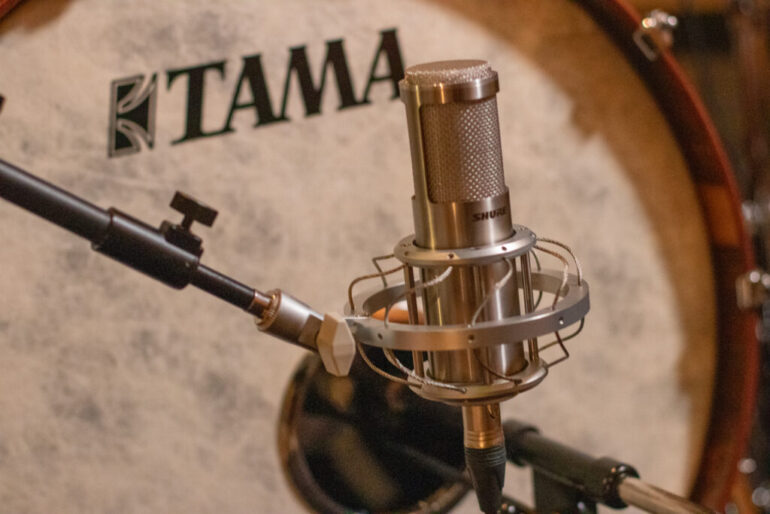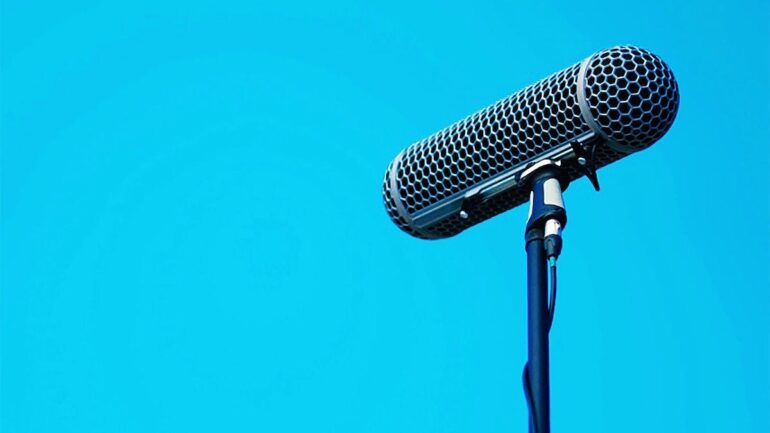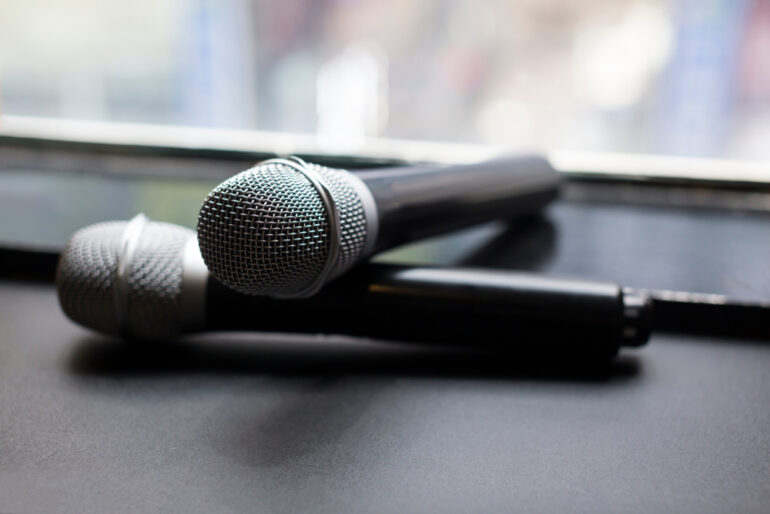Microphones, the unsung heroes of the audio world, come in various types, each designed for specific applications. Whether you’re a professional musician, podcaster, or content creator, understanding the differences between microphone types is crucial for capturing high-quality sound. In this article, we’ll explore the world of microphones, from condenser to dynamic, ribbon to USB, and more.
Explore the ultimate guide to finding the best headset microphone for speaking at SoundMaximum and elevate your audio experience today!
Condenser Microphones

Condenser microphones, distinguished by their exceptional sensitivity and wide frequency response, play a pivotal role in capturing nuanced audio. These microphones operate on an electrostatic principle, utilizing a diaphragm and a backplate to convert sound waves into electrical signals. Their intricate design allows for the detailed reproduction of sound, making them a top choice for various applications.
In the realm of studio recordings, condenser microphones shine, excelling in capturing the subtleties of vocal performances and acoustic instruments. The broad frequency response ensures that no sonic nuances are left unrecorded, creating a rich and vibrant audio experience. However, it’s essential to note their fragility; the diaphragm is delicate and can be susceptible to handling noise.
Despite this drawback, the pros of condenser microphones, such as their high sensitivity and ability to capture intricate details, outweigh the cons in controlled environments. Musicians, podcasters, and audio professionals often turn to condenser microphones when seeking a tool that can faithfully reproduce the depth and clarity of their sound sources.
Dynamic Microphones
Dynamic microphones, renowned for their durability and versatility, are essential tools in the world of audio. Operating on electromagnetic induction, these microphones utilize a diaphragm attached to a coil of wire within a magnetic field. This design allows dynamic microphones to handle high sound pressure levels with ease, making them ideal for a wide array of applications.
Live performances thrive on the robust nature of dynamic microphones. Their ability to withstand loud volumes and rough handling on stage makes them a staple for musicians, ensuring reliable and consistent sound reinforcement. While dynamic microphones may have a more limited frequency response compared to condenser counterparts, their resilience and affordability make them an attractive choice for performers.
Dynamic microphones find their place in amplifying musical instruments, delivering impactful vocals in concerts, and recording high-volume sound sources. Their straightforward design and solid construction contribute to their reliability in challenging environments. With their affordability, dynamic microphones become accessible options for those entering the realm of audio production, proving that quality sound doesn’t always come with a hefty price tag.
In summary, dynamic microphones stand as the workhorses of live sound, providing a robust solution for various audio needs. Whether on stage or in a recording studio, their versatility and durability make them an indispensable tool for capturing and amplifying sound with resilience and efficiency.
Ribbon Microphones

Ribbon microphones, characterized by their distinctive design and unique sound reproduction, occupy a special place in the world of audio recording. Operating on the principle of a thin metal ribbon suspended in a magnetic field, these microphones capture sound with a warmth and naturalness that sets them apart from other types.
The standout feature of ribbon microphones lies in their ability to deliver a smooth and detailed frequency response. Often favored for their vintage tonal qualities, ribbon mics are particularly well-suited for recording string instruments and vocals, where a nuanced and warm sound is desired.
Despite their artistic appeal, ribbon microphones do come with considerations. The ribbon element is delicate and may be more prone to damage compared to other microphone types. Additionally, their sensitivity to high sound pressure levels requires careful handling to prevent potential damage.
In the right recording scenario, however, the pros of ribbon microphones outweigh the cons. Musicians and recording engineers often choose ribbon mics when aiming for a classic and timeless sound. The unique sonic character they impart to recordings makes ribbon microphones a sought-after choice for those seeking to capture audio with vintage charm and authenticity.
USB Microphones
USB microphones, a product of technological advancement, have emerged as convenient and user-friendly solutions in the audio recording landscape. Designed for simplicity and ease of use, these microphones have gained popularity, especially among beginners and content creators entering the world of audio production.
The hallmark feature of USB microphones is their plug-and-play functionality. With a direct USB connection, these microphones eliminate the need for additional audio interfaces or complex setups. This simplicity makes USB microphones accessible to a broader audience, allowing individuals to start recording without the technical intricacies associated with traditional audio setups.
Ideal for podcasting, voiceovers, and casual recording setups, USB microphones offer a hassle-free experience. They often come with adjustable stands or built-in mounting options, enhancing flexibility for users in diverse recording scenarios. While they may not match the audio quality of professional XLR setups, USB microphones provide a suitable entry point for those exploring content creation.
Affordability is another key advantage of USB microphones, making them a practical choice for those on a budget. As technology continues to evolve, these microphones are likely to remain popular for their user-friendly design, making high-quality audio recording accessible to a broader audience without compromising on ease of use and convenience.
Shotgun Microphones

Shotgun microphones are essential tools in audio and video production, renowned for their unparalleled precision in sound capture. These microphones are meticulously designed to focus on specific sound sources while minimizing unwanted ambient noise. Widely embraced in the filmmaking industry, shotgun microphones play a crucial role in ensuring crystal-clear audio recordings, especially in dynamic settings.
Their narrow pickup pattern and extended reach make them indispensable for isolating dialogue and key sounds in outdoor environments or crowded spaces. Despite potential sensitivity to handling noise, the directional accuracy of shotgun microphones compensates by delivering high-quality audio with remarkable precision.
Whether used by journalists or in outdoor recordings, shotgun microphones stand out as reliable devices, offering professionals a valuable solution for capturing focused and clear sound in challenging and dynamic scenarios.
Lavalier Microphones
Lavalier microphones, recognized for their compact and hands-free design, have become integral tools in broadcasting, live performances, and interviews. These small and discreet microphones offer flexibility in various settings, allowing users to move freely without being encumbered by a handheld device.
Ideal for broadcasting, lavalier microphones provide a seamless solution for hosts and presenters, enhancing mobility while maintaining audio clarity. In live stage performances, their unobtrusive nature allows performers to focus on their craft without the hindrance of holding a microphone. However, it’s crucial to note that lavalier microphones may be sensitive to clothing rustle and have limitations in capturing low-frequency sounds.
Despite these considerations, lavalier microphones remain popular for their convenience and versatility, proving invaluable in scenarios where hands-free and inconspicuous audio capture is paramount.
Wireless Microphones

Wireless microphones, revolutionizing the audio landscape, offer unparalleled freedom of movement in various professional settings. These microphones have become essential tools in live performances, public speaking engagements, and fitness instruction, providing artists and speakers the flexibility to move without being tethered by cables.
The primary advantage of wireless microphones lies in their elimination of cable clutter, enhancing the performer’s stage presence. Whether delivering a speech, singing on stage, or leading a fitness class, users benefit from the unrestricted mobility these microphones provide. Despite their advantages, it’s essential to consider their reliance on battery power and the potential for interference in crowded environments.
In summary, wireless microphones represent a leap forward in audio technology, enabling performers and presenters to engage with their audience more dynamically. Their versatility makes them indispensable in scenarios where mobility and a cable-free experience are paramount.
Conclusion
In the vast world of microphones, each type serves a unique purpose. Whether you’re a musician, content creator, or public speaker, understanding the nuances of microphone technology can significantly enhance your audio experiences. From the studio to the stage, choosing the right microphone for your needs ensures that your voice is heard with clarity and precision.
